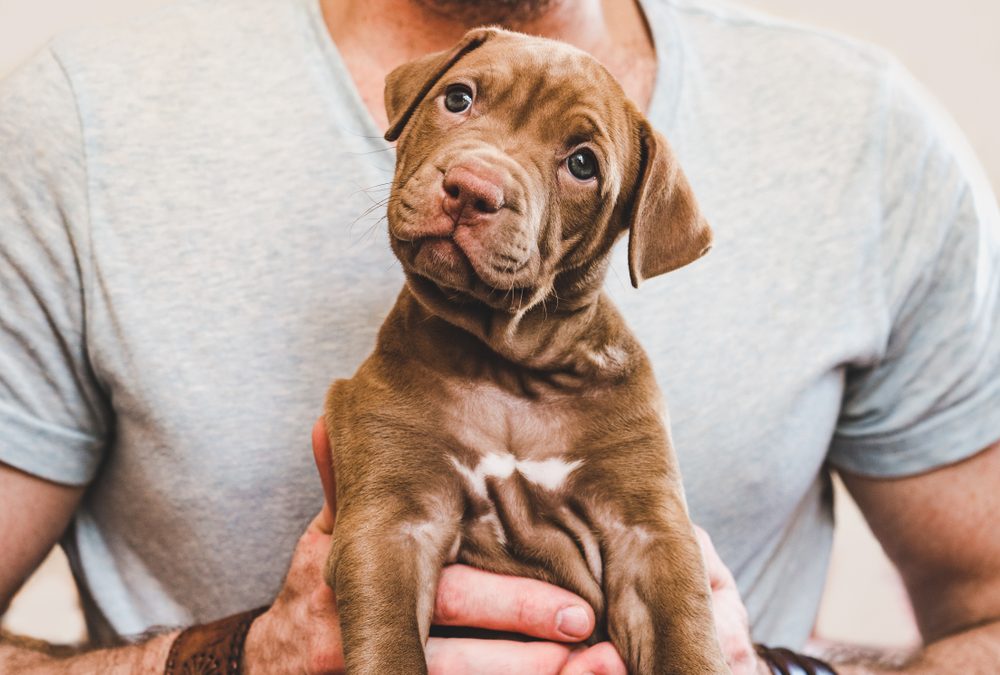Puppy training is a huge task for new pet owners. It really isn’t an easy task to potty train your puppy— just like human babies, puppies take lots of time and direction in order to get full control of their bladder and bowels.
The accidents your puppy has throughout the house can cause a lot of frustration, but it’s crucial to understand that punishing your pup for their little, surprise pees and poos will only be counterproductive to the cause.
So, what’s a puppy parent to do in these situations?
Well, here are some general tips to painlessly potty train your puppy.
Get Your Puppy Acclimated to Training
You need your puppy to be ready for all types of training. Tricks, walks, house behaviors etc. Also, what you do early on to set them up for success will be a major factor in their potty training. Remember: it’s easier to develop a bad habit than change to a good one.
Be patient- Take your time with the dog. Don’t write it off quickly. Remember, it’s very young and trying to learn a lot at once.
Discipline your puppy’s behavior- This can be something as simple as waiting for their food before they eat. If they get accustomed to obeying your commands early, you’re going to have a much easier time with everything else. Remember to practice it regularly. Otherwise, you’re going to have to reteach much more. It’s like going to the gym. You don’t expect to see results instantly, but if you skip even just a single day, you will have a much harder time getting the results you want.
Learn where your pet struggles- No pet is going to be perfect. You’re going to have a tough time occasionally. Be ready to think on your feet and adjust around what needs to be done rather than the original plan. If you wanted your dog to be able to do X by this time, and they aren’t there yet, or have learned far more, be prepared to pivot. Every dog is different. You’ll never know how great they are at learning until you discipline them and give them the proper attention it requires.
Once you get these steps down, the rest of the training will become easier and give your pet the best chance of being trained well. Then, and only then, will you see potty training become easier. Here’s how to plan the next steps.
Write it All Down
New puppies require a lot of attention, and that means you’ll need to closely follow and detail their every move. Physically write down the times in which your pup usually goes potty, and incorporate those times into your walks.
Go on Lots of Walks
Two-month-old puppies usually need to “go” roughly around every two hours. At three months, your pup will be able to hold it in for three to four hours; and at four months, up to five. Soon, your puppy will be fully trained and no longer have accidents in the home. Until that time comes, take him or her for short walks extra often.
Predictability and Positivity
Puppies-in-training thrive on two things — a predictable routine and positive reinforcement. Make sure to praise your pup when he or she goes potty outside, and make sure they know when to expect the next walk.
Stay Sweet
If your puppy does have an accident, simply say “whoopsies” or something similar in a surprised tone, and then go ahead and thoroughly clean it to make sure that no odors remain that will compel them to use that same spot again.
Above all else, stay positive, and remember — the puppy training stage will soon be over, and your dog will eventually outgrow the accident stage altogether!
Creating a Consistent Potty Schedule
Establishing a regular potty schedule is crucial in puppy training. Consistency helps your puppy understand when and where it’s appropriate to go. Start by taking your puppy out first thing in the morning, after meals, after naps, and before bedtime. These consistent outings not only prevent accidents but also help your puppy learn faster. Remember, young puppies have small bladders, so frequent trips outside are necessary. For more information on creating a schedule, check out our veterinary services.
Using Crate Training to Your Advantage
Crate training can be an effective tool in potty training. Dogs naturally avoid soiling their sleeping area, so a crate encourages them to hold it until they are taken outside. The crate should be large enough for your puppy to stand, turn around, and lie down, but not so large that they can use one corner as a bathroom. Introduce the crate gradually and ensure it’s a positive space with comfortable bedding and toys. For tips on crate training, visit our blog for detailed guides.
Monitoring Food and Water Intake
Puppies need a balanced diet and regular access to water. However, monitoring their intake can help manage their potty habits. Avoid feeding your puppy late at night and take away their water bowl two hours before bedtime to reduce the likelihood of nighttime accidents. Always consult with our veterinarians for pet nutrition counseling to ensure your puppy’s dietary needs are met.
Seeking Professional Help When Needed
If you’re struggling with potty training, don’t hesitate to seek professional help. A veterinarian or a professional dog trainer can provide valuable advice tailored to your puppy’s specific needs. At Ansede Animal Hospital, we offer veterinary exams and consultations to address any concerns you may have about your puppy’s health and behavior.
Remember, patience and consistency are key in puppy potty training. Celebrate small victories and stay positive. With time and dedication, your puppy will learn and grow into a well-trained companion.
